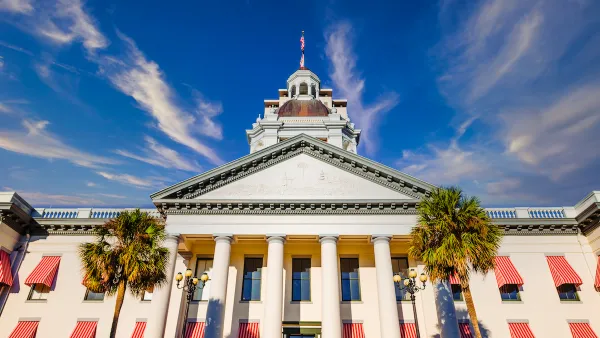The United States is making modest gains in the power and transportation sectors, but emissions in the industrial sector are holding steady, absent new reduction initiatives.

An annual report from Rhodium Group that analyzes trends in greenhouse gas emissions in the United States finds that “the US is on track to reduce emissions 24% to 35% below 2005 levels by 2030, absent any additional policy action,” far below the Paris Agreement goal of reducing GHG emissions by 50 to 52 percent. The report notes that “These estimates represent a rosier outlook for emissions reductions compared to Taking Stock 2021 (which estimated a 17-30% reduction by 2030 under current policy), but this change is largely attributable to slower macroeconomic growth projections and higher fossil fuel prices—not large policy changes.”
According to the report, “Industry becomes the largest-emitting sector absent meaningful policies to curtail emissions growth, with emissions remaining relatively flat depending on the scenario,” while the power sector continues to reduce emissions as more Americans turn to renewable energy and the transportation sector cuts some emissions thanks to electric vehicle adoption. “There has been some policy movement in the past year, although not close to the level of action required to meet the US’s 2030 climate target, and the recent Supreme Court ruling in West Virginia v. EPA has called EPA’s regulatory pathways into question.”
FULL STORY: Taking Stock 2022: US Greenhouse Gas Emissions Outlook in an Uncertain World

National Parks Layoffs Will Cause Communities to Lose Billions
Thousands of essential park workers were laid off this week, just before the busy spring break season.

Retro-silient?: America’s First “Eco-burb,” The Woodlands Turns 50
A master-planned community north of Houston offers lessons on green infrastructure and resilient design, but falls short of its founder’s lofty affordability and walkability goals.

Delivering for America Plan Will Downgrade Mail Service in at Least 49.5 Percent of Zip Codes
Republican and Democrat lawmakers criticize the plan for its disproportionate negative impact on rural communities.

Test News Post 1
This is a summary

Test News Headline 46
Test for the image on the front page.

Balancing Bombs and Butterflies: How the National Guard Protects a Rare Species
The National Guard at Fort Indiantown Gap uses GIS technology and land management strategies to balance military training with conservation efforts, ensuring the survival of the rare eastern regal fritillary butterfly.
Urban Design for Planners 1: Software Tools
This six-course series explores essential urban design concepts using open source software and equips planners with the tools they need to participate fully in the urban design process.
Planning for Universal Design
Learn the tools for implementing Universal Design in planning regulations.
EMC Planning Group, Inc.
Planetizen
Planetizen
Mpact (formerly Rail~Volution)
Great Falls Development Authority, Inc.
HUDs Office of Policy Development and Research
NYU Wagner Graduate School of Public Service





























